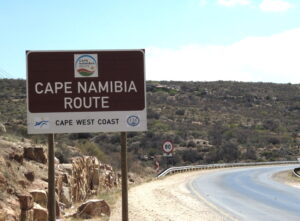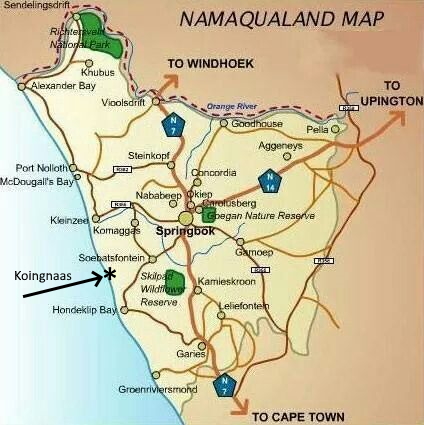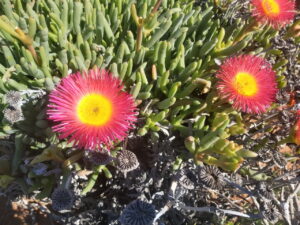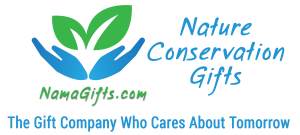FAQ
We Answer All Your Question Here
Each package looks a little different – the bigger and more expensive the package – the more goodies you will receive in your gift pack.
To see exactly what is in each GIFT PACK visit THIS LINK for more detail.
Click on the link below to see the delivery process
What Exactly Is The Wild Flower Garden & Reserve On Na-Koi-Ja-Ma Island – In Namaqualand?
We first thought we will name this new flower garden on NaKoiJaMa island The Namaqualand Botanical Gardens, but then we thought “no” this will not work – it might restrict us to much and may even take some of our (YOUR) freedoms away. For example: the freedom to allow plot owners to choose the succulent plants they want us to plant on their plots.
We just don’t know what the implication would be – so we changed the name to : The Wild Flower Garden On Na-Koi-Ja-Ma Island.
Our Goal: to plant, to re-plant and re-establish at least ten thousand indigenous Namaqualand Succulent Plants on the island’s fertile soil – creating this new Wild Flower Gardens – on individuals title and land owners plots.
When we started with the idea of allowing plot owners to get involved on a voluntary basis , we thought only a handful of people will like the idea.
But that didn’t happen – more people got involved in populating their own plots with indigenous Namaqualand Succulent Plants from the local nurseries in the area than we thought would happen.
This is a great and brilliant development – and it made the gifts we sell so much more special.
It is more special because it gives tine plot and land owners the opportunity to get involved in building the wild flower gardens voluntarily – for the benefit of generations to come.
All the tiny plots we sell is inside the gates of the new Wild Flower Garden & Reserve.
If you want to make a contribution towards the security fence we are busy building around the reserve, visit this link to see the Timber Fence Pole Package.
Can Your Visit Your Plot On Na-Koi-Ja-Ma Island?
The answer is a big “YES” – please visit your plot!
We really hope that you [and your family] will one day be able to visit your plot of land.
When you do visit, you will be able to enjoy the hospitality of the Namaqualand people.
You can also visit the Namaqua National Park which is only a few miles from Na-Koi-Ja-Ma Inland.
There are many other activities in the area – including 4×4 trips to the Richtersveld. Also a cultural and botanical landscape and world heritage site.

As a plot title holder of Na-Koi-Ja-Ma Island you are entitled to free access to the Wild Flower Gardens & Reserve.
When you visit you can use the tools and labor of one of our volunteers to help you plant some indigenous succulent plants from the nursery on your plot.
Let’s pre-arrange a time and date with our office to meet you at Na-Koi-Ja-Ma Inland. How does that sound?
If you have time, we will give you a little tour of the wild flower gardens and answer your questions.
We will also give you a little more information of the plants that is already on your plot.
To buy your own nature conservation plot on Na-Koi-Ja-Ma Island, please visit our online store here.

The first thing you may want to know is that Namaqualand is situated on the West Coast of Southern Africa. Up north it borders the World Natural Heritage Site known as the Richtersveld which is next to the Namib Desert in Namibia.
The Succulent Karoo
The area that needs protection is actually much bigger – it is called the “Succulent Karoo”.
The “Succulent Karoo” is an huge area in South Africa and stretches along the coastal strip of the Atlantic Ocean, – from Namibia down south to the Northern and Western Cape and it incorporates the entire Namaqualand.

Namaqualand in known for its wild flowers and succulent plants .
More than 40% of the 10 000 succulent plants in the Succulent Karoo are endemic – meaning you will find them nowhere else on earth but here.
We are about the build a Wild Flower Garden on Na-Koi-Ja-Ma Island and want to give you a small piece of land [plot] inside these gardens.
We then want to plant 10, 20, 30, 40 or even 50 different succulent plants from Namaqualand on YOUR plot – the plot of land we are about to give you.
Let me explain:
Together – with your help and purchase – we are going to try and protect the nearly 4000 (40%) indigenous plant species of Namaqualand.
Make no mistake – this is a serious business. We need to save these plants from extinction, mostly due to climate change and illegal harvesting.
So here is what we are about to do:
To help fund our ambitious project to return Na-Koi-Ja-Ma island into the jewel she once was, – and to establish a Wild Flower Garden & Nature Reserve on her, – we decided to sell “citizenship” and other fun title packages to individuals, families and groups who want to help us protect the succulent plants of Namaqualand and support us to build the Wild Flower Garden on Na-Koi-Ja-Ma island.
Each “citizen’s” package includes a parcel of land on the island, obviously inside the gates of the newly formed Wild Flower Gardens.
The size of the land parcels differs depending on the “citizenship” titles individuals or families choose to buy.
For example, the land parcels that are linked to the Royalty titles are 72 square feet in size.
On the other hand, the smaller land parcels that are linked to the Namaqualand Flower Whisperer titles are only 18 square feet in size.
It doesn’t matter what package, title or plot size you choose to buy, you will be able to call your plot of land your own property*.
But there is more and it is important; you will be able to choose indigenous succulent plants from our licensed nursery – and then request us to plant it for you – on your own plot.
Let me explain, in short, the basic’s of how this works:
Let say the package you choose gives you a 72 square feet plot on the island – which as I said before, – will be inside the gates of the Wild Flower Gardens & Reserve.
Your 72 square feet plot will measure 6 feet by 12 feet in size.
We will pen out your plot – it’s exact GPS coordinates will be recorded – it will be registered, in your name, in our company’s books.
We will plant a small signboard on your plot, carrying your name as owner and your official plot number – photos will then be taken of your plot and uploaded onto our online database and platform.
From here – with a special password – you will be able to see and access everything on your plot. You will be able to share it with your friends, family and colleagues.
As a “citizen” and landlord of a parcel of land inside the new Namaqualand Wild Flower Gardens & Reserve, – you can choose how you would like us to populate your plot with the indigenous succulent plants of Namaqualand and plants from the Richtersveld.
Populate Your Own Plot With Succulants
Before we move on to how we intent to roll this out; here is something else you might want to know.
In South Africa the law requires that plant growers who keep Namaqualand flora must have a special license to grow and sell some of these indigenous plants.
Our nursery as well as all the other private nurseries in the surrounding towns has such licenses. The succulent plants that we want to plant on your plot will be collected from these nurseries.
Licensed plant growers & nurseries keep record of all plants they have in stock and then issue permits when they sell to new owners, – one permit for each plant they sell.
Permits to keep plants will be registered and issued to the GPS location and to the official registration number of your plot.
Namaqualand succulent plant experts are available at the Wild Flower Gardens to help you if you need guidance. They will do this via our online platform messaging service – to share pictures with you and to tell you more about the different plants available and help you choose plants to populate your plot with.
It is extremely exciting and because the plants are specifically grown locally for our clients – meaning for Na-Koi-Ja-Ma island citizens, ambassadors, flower whisperers, and other titles, they are very reasonably priced.
For example; prices start from as low as $2 per plant to as much as $20 per plant, depending on the types and sizes of the plants.
But here is the more important point.
We will ever force you to do anything on your plot of land – not even to buy plants from the nursery to populate it. If you don’t want to get involved in the population process, we understand completely, – we have volunteers that will love to do it on your behalf.
So – populating your plot of land with plants is not a requirement for ownership or for citizenship.
It is 100% your choice. You may even want to choose to leave the wild flowers and succulents that may already grow on your plot as-is, and that is fine – we will care for them either way.
The bottom line is this – your contribution – i.e your purchases – doesn’t matter how big or small it is – will help us to build the Wild Flower Gardens – which will ultimately lead to help saving the Namaqualand Succulents.
[*See the FAQ: What does “Land Ownership, Personal Rights & Custodianship” mean?]
This is one question that we get asked a lot and I want to answer it here in detail.
What does “Land Ownership, Personal Rights & Custodianship” on these tiny plots – inside the Wild Flower Garden – on Na-Koi-Ja-Ma Island – really mean?
Look at it from our world – to raise funds for conservation, we basically sell gift packages – and those gift packages include personal rights and custodianship on a tiny parcel of land inside the Wild Flower Garden.
This means that when we talk about “tiny plots or land ownership” on Na-Koi-Ja-Ma Island, we basically say that we will give you – or transfer to you – personal rights to your plot – and we give you custodianship of your plot.
When you have custodianship of a parcel of land – you basically will have some say on the types of plants that we want to plant on your plot, within the rules of the land obviously. So we are basically populating your plot with plants on your behalf – and if you want to get involved it will be great.
I hope in make sense… I will get back to this a little later.
The fact is: the South African property act does not allow for the registration of ownership of tiny plots at the deeds offices across the country, however – it does allow us to sell personal rights and custodianship of land we own, to individuals, companies or trusts.
The control ownership – we have a Tiny Plot: Land Parcel Register Book, it’s a little bit like a mini “deeds office register”. It kept with our accountants and lawyers to insure accuracy and gives a little credibility to the process.
What we do is we notarize these tiny plot – each with it own unique number – and then match each plot with the name of its new owner in the register.
The registrations of all the tiny plots are thus notarized in our company’s own records and it also get registered on our online platform, were our clients – who are plot owners – have 24/7 access too.
When registration is done – plot owners receive a digital and printable copy of the signed and notarized certificate – which confirms the personal rights and custodianship of each persons plot on the island.
But here is something important:
As you can imagine, people circumstance changes, and ownership – or rather, personal rights and custodianship on plots change too – they can’t be in one persons name indefinitely – we don’t live a 1000 years right? There has to be an end date – or at least a re-view date.
To make this a fair and win-win offer for all – plot ownership- or personal rights – or custodianship – whatever you want to call it – automatically last for a minimum period of 4 years, 4 months, 4 weeks and 4 days – and can then be extended.
If plot owners thus wish to extend their ownership on a plot of land for a longer period – during or before it lapses – they are welcome to do so. Only a small renewal fee – to pay for the re-registration – is payable.
I know – so where does the 4-4-4-4-time period come from?
As you may remember from the Na-Koi-Ja-Ma story, it answers the question – “how long it would take to travel to the nearest star system – Alpha Century – from earth – or rather from Na-Koi-Ja-Ma island?
The answer to this question is: Exactly 4 years, 4 months, 4 weeks and 4 days.
Her name is Na-Koi-Ja-Ma. Nobody is 100% sure but they think that, in ancient West Coast language, “Na-Koi-Ja-Ma” roughly means, “something valuable or something worth protecting”. She is a very small island, only 44½ acres in size.
During the last century the De Beers Mining Company in South Africa extracted hundreds of thousands of carets of diamonds from the desert floor that surrounded her. In all this time, she produced nothing; not a single sliver of a diamond – nothing – and yet, her name means “something valuable or something to protect”.
Why?
Over time a small town was build right around this island, trees were planted on her corners, roads were constructed on her edges, but not one brick was laid upon her soil – until 1976.
The town expanded quickly; soon paths, pipes and cables were laid down on the bedrock underneath her red desert sand.
One evening as the dust settled and as the sun set in the west, the last streaks of sunlight highlighted her broken and ripped apart soil. Instinctively the people in the town knew they crossed the line; they made a mistake…
Overnight things started to change and it changed rapidly. The diamonds of yesterday disappeared, – as if it vanished in thin air.
By 1978 – less than 24 months after invading her inner beauty and crisscrossing her landscape for self greed – the mine activities around the town had to close down – shocked but to save face, the mine managers said: it’s only temporarily.
As sad as the closing of the mine was for the miners, the local tribes smiled: “It is the spirits of Na-Koi-Ja-Ma that finally had the last words, they said: “NO – NO-MORE”.
Hundreds of miles away – deep into the Atlantic Ocean and on the coastline the mining activities continued for a few more years but then, – as quickly as the diamond rush started nearly a century earlier, – it all collapsed.
The desert once again become quiet, reclaiming some of its land and some of its sand, – but mostly lying bare for years.
Scarred and wounded with a broken landscape, – one night a miracle happened.
It was a bitter winter. The days were cold, the nights were freezing, but then, totally unexpected, it started to rain, it rained for weeks, – a sight not seen in this desert for a many- many years.
When the sun at last showed itself again, – the wounded diamond fields in the Namaqualand desert, all around our tiny island, turned itself into a natural wonder like never seen before.
Carpets of flowers stretched as far as the eyes could see.
The word spread quickly, – those that could travel to experience this natural transformation first hand looked at the miles and miles of flowers, and at this incredible miracle until their eyes hurt.
They took pictures – they shared it with others – and those people shared it with friends and family and more. People kept on taking pictures and kept on sharing year after year, so much so that this pattern of taking pictures and sharing has now been going on for more than 50 years.
At last, – the Namaqualand desert gave all of us a brand new treasure – a treasure far greater than all the diamonds in the world.
It is a treasure worth sharing, – it’s a valuable treasure worth protecting, – and now for the very first time, – after so many decades, – we now know exactly what the words Na-Koi-Ja-Ma means.
She is an island so vulnerable and valuable that, – when the sun sets tonight in the desert, you can hear her crying for help, – begging to be protected.
It is said that those who help her will be blessed “by the gods in the starts” in ways that can not be described in modern human language.
The proof they say can be felt at night – when you look up and wonder how far the stars are way.
The legend goes that if you stand on Na-Koi-Ja-Ma island, in the middle of this desert, in the middle of the night, the closest stars in our Milky Way, Alpha Centauri is só bright – you can feel the warmth of the stars on your fingertips when you try to touch them.
Save & Secure Payments:
We use a secure PayPal Payment System to insure your details stay safe.
You can also pay with your Credit Card on our system.

How My Purchase Work:
# What You Are Buying
# The Delivery Process
# Login - Membership
# Our Refund Policy
# Terms & Conditions
Any Questions For Us?

